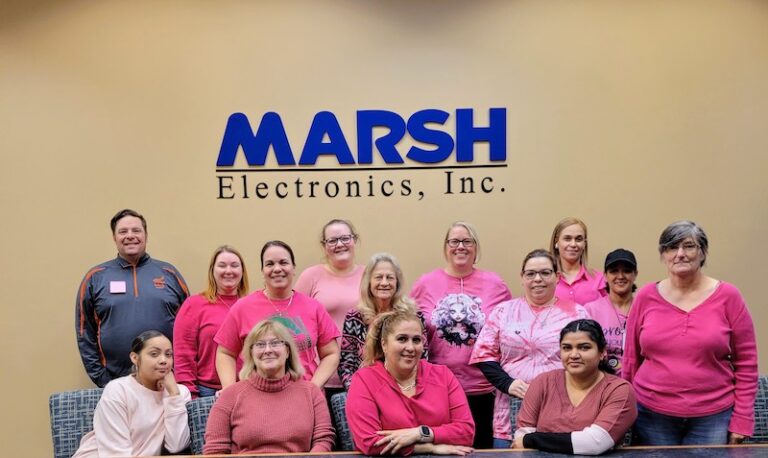The Power Women of the Wire Harness Industry
by Melissa Femia
This edition of the ‘Power Women’ series features a wire harness engineer with roots in the Midwest. Lisa Bellin is not only a female in the male-dominated field of wire harnessing, she is also a mechanical engineer—of the least popular types of engineering among females. Although females represented 15% of the engineering workforce in 2015, only 9% of the mechanical engineering workforce were women (retrieved from www.nsf.gov). The figures validate that females remain highly underrepresented in engineering. This series of articles seeks to positively impact the number of females in wire harnessing by highlighting our successful and respected female engineers. A goal is to demonstrate the success possibilities, potential paths, and quality of work life available for females in the field.
Lisa Bellin
Professional Career
Although Lisa worked in wire harness companies previously, she is enjoying her work assignment at Nexans autoelectric of America, in Poland, Ohio leading Program Management in Business Pursuit. Lisa’s past experiences include her first job at General Motors’ Packard Electric Division where she was a Quality Engineer in the lead prep manufacturing plants in Northeast Ohio. Staying in the quality realm, she was re-assigned to the battery cable manufacturing plant. Subsequent to her quality positions, she moved to automotive Application Engineering roles where she worked on programs for General Motors and Ford. After nearly 15 years with the company, Packard relocated most application engineering positions from Warren. Because of her expertise, Lisa received an offer to work at Stoneridge, another wire harness company with a facility nearby in Ohio. At Stoneridge, she became acclimated with agricultural customers via her product engineering position. While her previous Packard experiences concentrated on high-volume customers, her Stoneridge customers exhibited cyclical schedules and much lower volumes. After a downturn in business and after Lisa was with the company about 6 years, Stoneridge (now MSSL) decreased its Ohio workforce. Next, Lisa was fortunate enough to very quickly find work with a local manufacturer of precision CNC machines. During this 1 and ½ years, Lisa was outside of the wire harness industry. After corporate financial concerns arose, she was again able to find a key position with a global wire harness supplier, Nexans autoelectric. Today, she works with creative component designers as their program manager—a position which enables her to capitalize on her attention to detail, strong organizational skills, and diverse engineering experience.
Early Exposure
In terms of Lisa’s early exposure to engineering, she derived from a family in which the females were primarily in the medical field and the men were engineers. Lisa’s grandfather was an engineer and his daughters both married engineers. Her father was also an engineer. When Lisa was in her Junior year of high school, she assumed that she would be a nurse like most of the women in her family. However, she shadowed a nurse for a day and realized that she did not want to become a nurse. Because of her strong math and science skills, she decided to attend engineering school following the path of the males in her family. She chose mechanical engineering, in particular, due to the broad scope of areas and industries in which mechanical engineers work.
Collegiate Experience
Wanting to attend a college in Ohio, Lisa went to The University of Cincinnati primarily because it was a 5-year program with several co-op opportunities. There were 4 females of 40 total students in her group within the mechanical engineering class. I asked her if the 4 girls formed a study group, but contrary to my expectation—she did not spend time socially or in groups with the other 3 females. Rather, she worked with others with whom she had social connections. She admitted to feeling intimidation while in college—both because she was not a part of the large, local commuter contingent and because she considered herself less experienced with engineering school topics. As a girl who played with dolls and thought about being a fashion designer, she was not confident that she could compete with boys who she perceived were re-assembling engines in their youths. Despite the doubts, she persevered and performed well.
Lisa specifically recommends that high school females should not discount engineering simply because they cannot envision themselves as engineers or perhaps because they do not have friends pursuing the field. She wants them to recognize the broad scope of engineering. If one particular area does not appeal, another will. In reflecting on my conversation with Lisa, I noticed how easily she was able to transition from one job to another. While other workforce employees take months or even years to find a viable position after leaving a previous one, Lisa was marketable and in fact, sought after due to her education and experience. Thank you, Lisa, for being a positive role model and sharing your story with me and Wiring Harness News.
































































